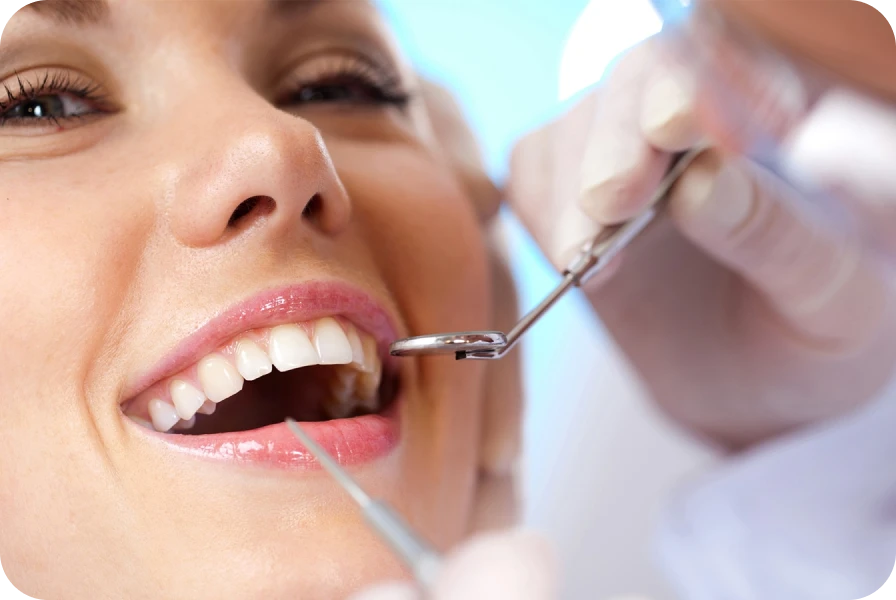Whitening
To begin, define your teeth whitening goals. Decide on the desired level of whiteness. Consider consulting your dentist to assess the condition of your teeth. Take into account any sensitivities or allergies before starting the process.
Choosing the Right Whitening Method
Several options exist for whitening your teeth. The first, at-home whitening kits, are practical and accessible. Follow the instructions carefully to avoid any irritation. The second option, whitening strips, is easy to use. These strips contain a whitening gel that you apply directly to your teeth. The third method, custom trays, is more personalized. These trays are made from an impression of your teeth. They are filled with whitening gel, which you wear for several hours a day.
Precautions before Whitening
Before starting, thoroughly clean your teeth. A dental scaling performed by your dentist ensures the treatment’s effectiveness. Avoid consuming acidic or staining foods before whitening. These foods can affect the process and lead to uneven results.
Teeth Whitening Steps
Follow each step of the treatment to achieve optimal results. Apply the gel or strips as indicated on the packaging. Never exceed the recommended time to avoid irritation or sensitivities. Wait a few days between each treatment to allow your teeth to rest.
Monitoring Results

Observe the evolution of your teeth’s color over the days. If you notice increased sensitivity, stop the treatment and consult your dentist. Take photos before and after each session to compare the results. This allows you to adjust the treatment if necessary.
Addressing Side Effects
Sensitivities are common after teeth whitening. Use an appropriate toothpaste to relieve pain. Reduce the frequency of treatments if sensitivity persists. If irritations become too bothersome, discontinue whitening and seek advice from your dentist.
Maintaining the Results
Maintaining results after whitening is essential. Avoid staining foods and drinks such as coffee, tea, or red wine. Brush your teeth twice a day with a whitening toothpaste. Use an alcohol-free mouthwash to preserve whiteness. Schedule periodic touch-ups according to your dentist’s recommendations.
Adjust your Dental Care Routine
Adopt a suitable care routine to prolong the effects of whitening. Prefer electric toothbrushes for deep cleaning. Supplement with regular use of dental floss or interdental brushes. These actions eliminate food residues responsible for stains.
Avoid Habits that Stain Teeth
Certain habits harm the whiteness of your teeth. Tobacco is one of the main causes of tooth yellowing. If you smoke, consider reducing or quitting. Additionally, acidic foods like citrus fruits weaken tooth enamel. Reduce their consumption to preserve your teeth.
Consult a Professional for In-Office Whitening
If you prefer professional treatment, schedule an appointment with your dentist. In-office whitening is faster and often more effective. The dentist applies a more concentrated gel, activated by a special light. This procedure allows for visible whiteness in a single session.
Preparing for your Whitening Session
Before the session, inform your dentist of any sensitivities or allergies. Be prepared to spend about an hour at the office. Avoid consuming staining foods or drinks before the session. This maximizes the treatment’s effectiveness.
Follow-up after In-Office Treatment
After the treatment, follow your dentist’s recommendations. Avoid staining foods for at least 48 hours. Use toothpaste for sensitive teeth if you experience any pain. Schedule a follow-up visit to assess the results and adjust care.
Understanding the Limitations of Whitening
Teeth whitening has its limitations. Crowns, veneers, or fillings do not change color. If you have dental restorations, discuss possible options with your dentist. Furthermore, results vary depending on the nature of the stains. Some stains, related to medication or age, may be more difficult to remove.
Achieving Lasting Whitening
To prolong the effects of whitening, avoid bad habits. Do not smoke and limit your consumption of coffee or tea. Adopt a rigorous dental care routine to maintain white teeth. If necessary, consider periodic touch-ups under your dentist’s supervision.
Alternatives to Teeth Whitening
If whitening is not suitable for you, explore other options. Ceramic veneers can mask stubborn stains. They offer a durable and aesthetic solution. Discuss with your dentist to determine the best option for you.
Daily Smile Care
A smile is an essential asset. Take care of it by adopting good habits. Brush your teeth regularly, use dental floss, and make regular visits to the dentist. Maintain a balanced diet to preserve your oral health. A radiant smile begins with good daily hygiene.
This text, with its clear and precise recommendations, guides you through each step of the teeth whitening process, while taking into account practical advice for maintaining the results.
